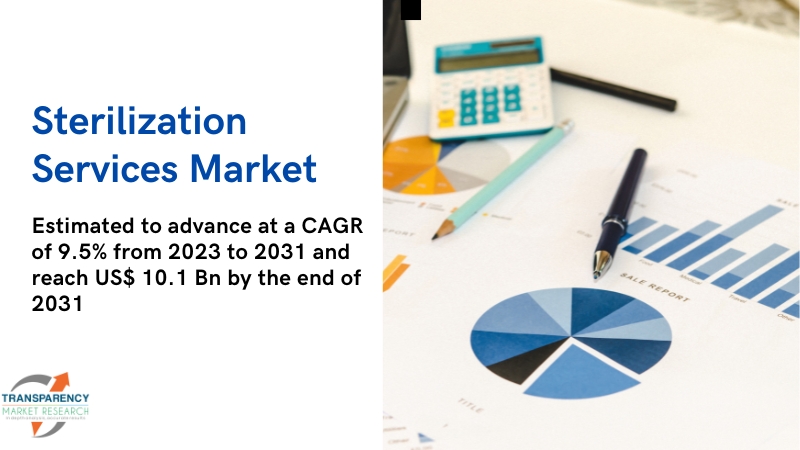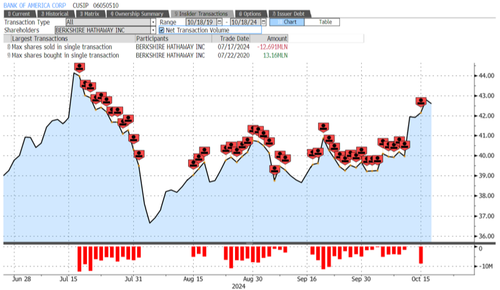
Jitalia17 Market Review: The Defiant Ones? Fresh from a vigorous ten-week rally that closed 2023 across equity and bond (finally!) markets alike, the calendar rolled over with optimism that (1) the Federal Reserve (Fed) was done hiking and (2) its array of closely-monitored economic measures would cooperate to facilitate a sooner-than-later pivot to easing. While nothing developed of sufficient surprise (yet!) that swayed expectations to a resumption of further tightening to monetary policy, there were ample instances of data appearing to defy the cumulative weight of 525 basis points ('bps') in hikes to delay anticipation of when easing might kickoff, and the would-be frequency of cuts thereafter. Mainly, the “defiant ones” included jobs, prices and growth, reports of which suggested no urgency to the Fed for a cut, particularly on the inflation front, as the CPI climbed 0.
4% in both January and February, hardly evidence of surrender. Those prints, along with ongoing robustness in non-farm payrolls and a healthy expansion to GDP, caused rates market participants to reassess expectations for the path of Fed policy, with projections of an initial cut moved to June from March and 150 bps of 2024 easing trimmed to 75 bps. The Fed, for its part, maintained its resolve and gave no indication it was inclined to ease prematurely on unsupportive indicators.
Against this backdrop, every tenor across the U.S. Treasury curve moved higher on the quarter, some 40 to 50 bps beyond the 2-Year ( US2Y ), continuing the inversion and delivering a reality check on what was an exuberant end to last year, in terms of hopes for the elusive soft landing and market returns.
Though the equity market seemed unfazed on the potential postponement of a return to an accommodative Fed trend with the S&P 500 ( SP500 , SPX ) notching a 10%-plus gain for the second consecutive quarter, the bond market bore the brunt of the backup in U.S. Treasury rates.
The Bloomberg U.S. Aggregate Bond Index fell 0.
8%, though an improved initial yield profile and positive sector effects, especially corporate, muted some of the drawdown versus earlier quarters of rising rates dating back to early 2022. To wit, yield spreads in the U.S.
Investment Grade Credit sector declined to a cycle-low 83 bps over U.S. Treasury issues and drove good relative performance, albeit still on negative returns of 0.
4%. The shorter duration character of high yield corporates, combined with equity-like enthusiasm, brought positive total returns of 1.5%, more than eclipsing the impact of higher rates with +160 bps of duration-adjusted performance.
In the securitized markets, private label (non-agency) commercial mortgage-backed securities ('CMBS') issues were the biggest beneficiaries of the equity-bond “optimism gap”, outpacing comparable-maturity U.S. Treasury issues by 240 bps.
Turning to residential MBS, the non-agency sector performed well amid sustained demand and resilient home prices, though the higher U.S. Treasury levels and attendant pickup in rate volatility weighed on agency MBS returns, both absolute and relative.
Finally, asset-backed securities (ABS) managed a 0.7% gain, with the sector benefitting from short durations and strong new-issue sponsorship on attractive yields. Performance Despite Treasury yields moving higher throughout the quarter on recalibrated expectations for inflation and the future path of Fed policy, the TCW Short Term Bond Fund I-Class ( MUTF: TGSMX , “Fund”) gained 0.
73% (net of fees), though this trailed the FTSE 1-Year U.S. Treasury Index (“Index”) by 13 bps.
Relative underperformance was attributable almost entirely to the Fund’s duration position, which remained longer than the Index during the period while extending in February alongside the backup in rates. Meanwhile, exposure to fixed income spread sectors benefitted returns as nearly every sector outpaced duration-adjusted Treasuries over the quarter, with the Fund’s positions among securitized products providing the greatest benefit. Holdings of single asset single borrower non-agency CMBS performed well given a reduction in yield premiums and increased demand, while AAA-rated CLOs also contributed.
In residential MBS, the greatest impact came from non-agency MBS holdings, particularly high-quality legacy collateral, while agency MBS exposure had little impact on the quarter as the benefit from sector exposure was offset by issue selection within the space. Finally, the allocation to short corporates boosted relative returns as they bested comparable short duration Treasuries, with the focus on financials providing an added benefit as it was the best-performing corporate sector. The performance data presented represents past performance and is no guarantee of future results.
Returns assume all income items are reinvested. Current performance may be lower or higher than the performance data presented. Performance data current to the most recent month end is available on the Fund’s website at TCW.
com . Investment returns and principal value will fluctuate with market conditions. The value of an investment in the Fund, when redeemed, may be worth more or less than its original purchase cost.
You should consider the investment objectives, risks, charges and expenses of a mutual fund carefully before investing. A Fund’s Prospectus and Summary Prospectus contain this and other information about the Fund. To receive a Prospectus, please call 800-386-3829 or you may download the Prospectus from the Fund’s website at TCW.
com . Please read it carefully. Click to enlarge Outlook and Positioning Though the U.
S. economy has seemingly defied all expectations throughout the course of this Fed hiking cycle, the impacts of 525 bps of Fed hikes and ongoing inversion of the yield curve cannot be fully discounted, even if they have thus far been held off. Indeed, the well-documented consumer spending of pandemic-era excess savings helped to blunt the initial impact, while 2023’s continuation of the consumer dissaving theme with increased short-term credit utilization, including “buy now, pay later” schemes, helped further propel economic growth from the consumer side.
However, credit comes at a cost, and the growing balance on consumer credit cards and other financing options comes at a time where the interest on those balances are at extremely elevated levels. For lenders, this has translated to growing losses on unsecured consumer loans and commensurate tightening of lending standards, which will only serve to further slow the economy once it turns. On the corporate side, businesses are now multiple years into an elevated interest rate regime and have likely exhausted the primary means of protecting margins, including price reductions, hiring freezes, and a furloughing of employees to part time work, with layoffs the final piece that loosens the labor market and pushes the economy into a recession.
In this environment, the yield curve is expected to re-steepen sharply as the Fed steps in to support the economy, shore up markets, and inject liquidity into the system. Duration positioning remains longer than typical with a focus on front-end yields given our view that rates are restrictive and above fair value, especially in a slowing economy where inflation has generally been on a downward trend. Sector positioning currently emphasizes high-quality securitized product opportunities offering attractive risk-adjusted yields, with a focus on agency MBS.
Though nominal spreads have come down from the peaks observed last May and October, they remain wide relative to historical averages and other high-quality fixed income products, creating compelling relative value that is further supported by the government guarantee and liquid nature of the sector. Non-agency MBS also offers good yields and solid fundamentals after years of amortization and housing price appreciation that has built up substantial equity in the underlying properties, incentivizing homeowners to remain current and insulating bondholders from potential losses. Meanwhile, CMBS represents a smaller and more targeted allocation with a focus on interest-only bonds and high-quality collateral, while ABS exposure emphasizes AAA-rated CLOs and private student loans.
Turning to corporate credit, current market valuations present an asymmetrical risk and reward profile; the likelihood of spreads compressing meaningfully from these levels is small, while the risk of significant widening as the sector reprices to a potentially slowing economy is high. As such, Fund exposure is relatively conservative, emphasizing large banks and more defensive sectors like communications, non-cyclicals, and those not typically prone to cyclical volatility. IMPORTANT DISCLOSURE This material may include estimates, projections and other “forward-looking” statements.
Actual events may differ substantially from those presented. TCW assumes no duty to update any such statements. This material reflects the current opinions of the author but not necessarily those of TCW and such opinions are subject to change without notice.
TCW, its officers, directors, employees or clients may have positions in securities or investments mentioned in this publication, which positions may change at any time, without notice. This material may include estimates, projections and other “forward-looking” statements. Actual events may differ substantially from those presented.
TCW assumes no duty to update any such statements. All projections and estimates are based on current asset prices and are subject to change. Annual fund operating expenses as stated in the Prospectus dated March 1, 2024, excluding interest and acquired fund fees and expenses, if any.
The performance data presented represents past performance and is no guarantee of future results. Returns assume all income items are reinvested. Current performance may be lower or higher than the performance data presented.
Performance data current to the most recent month end is available on the Fund’s website at TCW.com . Investment returns and principal value will fluctuate with market conditions.
The value of an investment in the Fund, when redeemed, may be worth more or less than its original purchase cost. The annualized since inception return for the index reflects the inception date of the Class I Share Fund. For period 2/1/1990-3/31/2024.
Since inception returns include the performance of the predecessor limited partnership for periods before the Fund’s registration became effective. The predecessor limited partnership was not registered under the Investment Company Act of 1940 (“1940 Act”) and therefore, was not subject to certain investment restrictions imposed by the 1940 Act. If the limited partnership was registered under the 1940 Act, its performance may have been adversely affected.
Effective March 1, 2024, the Fund’s investment advisor has agreed to waive fees and/or reimburse expenses to limit the Fund’s total annual operating expenses (excluding interest, brokerage, extraordinary expenses and acquired fund fees and expenses, if any) to 0.44% of average daily net assets with respect to Class I shares. The contractual fee waiver/expense reimbursement will remain in place through March 1, 2025 and before that date, the investment advisor may not terminate this arrangement without approval of the Board of Directors.
FTSE 1-Year Treasury Index – Represents the return of the one-year treasuries each month (auctioned monthly). It is determined by taking the 1-year T-bill at the beginning of each month and calculating its return. Effective May 1, 2018, Citigroup 1-Year Treasury Index became FTSE 1-Year Treasury Index.
The index is not available for direct investment; therefore its performance does not reflect a reduction for fees or expenses incurred in managing a portfolio. The securities in the index may be substantially different from those in the Fund. Source: TCW, FactSet, State Street B&T Investment Risks It is important to note that the Fund is not guaranteed by the U.
S. Government. Fixed income investments entail interest rate risk, the risk of issuer default, issuer credit risk, and price volatility risk.
Funds investing in bonds can lose their value as interest rates rise and an investor can lose principal. Mortgage-backed and other asset-backed securities often involve risks that are different from or more acute than risks associated with other types of debt instruments. MBS related to floating rate loans may exhibit greater price volatility than a fixed rate obligation of similar credit quality.
With respect to non-agency MBS, there are no direct or indirect government or agency guarantees of payments in pools created by non-governmental issuers. Non-agency MBS are also not subject to the same underwriting requirements for the underlying mortgages that are applicable to those mortgage-related securities that have a government or government-sponsored entity guarantee. Please see the Fund’s Prospectus for more information on these and other risks.
Glossary of Terms AAA Rating – Rating issued to investment-grade debt that has a high level of creditworthiness with the strongest capacity to repay investors. Agency MBS – The purchase of mortgage-backed securities issued by government-sponsored enterprises such as Ginnie Mae, Fannie Mae or Freddie Mac. Amortization – The paying off of debt with a fixed repayment schedule in regular installments over a period of time.
Asset-Backed Securities – A financial security backed by a loan, lease or receivables against assets other than real estate and mortgage-backed securities. Basis Point (bps) – One hundredth of one percent, used chiefly in expressing differences of interest rates. Bloomberg Barclays U.
S. Aggregate Bond Index – A market capitalization-weighted index of investment-grade, fixed-rate debt issues, including government, corporate, asset-backed and mortgage-backed securities, with maturities of at least one year. The index is not available for direct investment; therefore its performance does not reflect a reduction for fees or expenses incurred in managing a portfolio.
The securities in the index may be substantially different from those in the Fund. Portfolio characteristics and securities are subject to change at any time. Bond – A fixed income instrument that represents a loan made by an investor to a borrower (typically corporate or governmental).
A bond could be thought of as an I.O.U.
between the lender and borrower that includes the details of the loan and its payments. A bond has an end date when the principal of the loan is due to be paid to the bond owner and usually includes the terms for variable or fixed interest payments that will be made by the borrower. Bonds are used by companies, municipalities, states, and sovereign governments to finance projects and operations.
Owners of bonds are debtholders, or creditors, of the issuer. CMBS (Commercial Mortgage-Backed Securities) – A debt obligation that represents claims to the cash flows from pools of mortgage loans on commercial property. CLO (Collateralized Loan Obligations) – A special purpose vehicle (SPV) with securitization payments in the form of different tranches.
Financial institutions back this security with receivables from loans. Collateral – Property or other assets that a borrower offers a lender to secure a loan. Corporate – Of or relating to a bond issued by a corporation as opposed to a bond issued by the U.
S. Treasury, a non-U.S.
government or a municipality. CPI (Consumer Price Index) – Measures the average change in prices over time that consumers pay for a basket of goods and services. Credit – A contractual agreement in which a borrower receives something of value now and agrees to repay the lender at a later date, generally with interest.
Credit also refers to the creditworthiness or credit history of an individual or company. Cyclical – A cyclical stock is a stock highly correlated to changes in the economy. Drawdown – A decline in an investment or fund.
Duration – A measure of the sensitivity of the price (the value of principal) of a fixed-income investment to a change in interest rates. Duration is expressed as a number of years. Rising interest rates mean falling bond prices, while declining interest rates mean rising bond prices.
Expense Ratio – A measure of what it costs an investment company to operate a mutual fund. Federal Reserve (the Fed) – The central bank of the United States which regulates the U.S.
monetary and financial system. Floating Rate – Any interest rate that changes on a periodic basis. The change is usually tied to movement of an outside indicator, such as the prime interest rate.
FTSE (Financial Times Stock Exchange) – The Financial Times Stock Exchange (FTSE), now known as FTSE Russell Group, is a British financial organization that specializes in providing index offerings for the global financial markets. GDP (Gross Domestic Product) – The market value of all final goods and services produced within a country in a given period of time. High Yield – A bond that is rated below investment grade.
Inflation – A condition of a rise in the general level of prices of goods and services in an economy over a period of time. Investment Grade – A bond that is rated Baa3/BBB- or higher by Moody’s, Standard & Poors and Fitch. Liquidity – The ability to convert an asset to cash quickly.
MBS (Mortgage- Backed Securities) – A type of asset-backed security that is secured by a mortgage or collection of mortgages. These securities must also be grouped in one of the top two ratings as determined by a accredited credit rating agency, and usually pay periodic payments that are similar to coupon payments. Furthermore, the mortgage must have originated from a regulated and authorized financial institution.
Monetary Policy – The actions of a central bank, currency board or other regulatory committee that determine the size and rate of growth of the money supply, which in turn affects interest rates. Mutual Funds – An investment vehicle that is made up of a pool of funds collected from many investors for the purpose of investing in securities such as stocks, bonds, money-market instruments and similar assets. Mutual funds are operated by money managers, who invest the fund’s capital and attempt to produce capital gains and income for the fund’s investors.
A mutual fund’s portfolio is structured and maintained to match the investment objectives stated in its prospectus. Non-agency – Mortgage backed securities made up of mortgage loans that are not guaranteed by a government-supported agency. Non-Agency MBS – Mortgage backed securities sponsored by private companies other than government sponsored enterprises such as Fannie Mae or Freddie Mac.
Non-cyclical – Non-cyclical stocks repeatedly outperform the market when economic growth slows. Non-cyclical securities are generally profitable regardless of economic trends because they produce or distribute goods and services we always need, including things like food, power, water, and gas. QE (Quantitative easing) – A form of monetary policy in which a central bank, like the U.
S. Federal Reserve, purchases securities from the open market to reduce interest rates and increase the money supply. Recession – Two consecutive quarters of negative economic growth as measured by a country’s gross domestic product.
Risk Premium (or Yield Premium) – The minimum rate of return demanded by holders of a risky asset in excess of the return on a risk-free asset with similar maturity and duration profile. S&P 500 - The S&P 500 Index, or Standard & Poor’s 500 Index, is a market-capitalization-weighted index of 500 leading publicly traded companies in the U.S.
The index actually has 503 components because three of them have two share classes listed. Securitized – When a bank pools together different kinds of loans to clear them off its balance sheet, to free up credit for new lenders, and to create new securities that can be marketed and sold to investors. Soft Landing – A soft landing is the goal of a central bank when it seeks to raise interest rates just enough to stop an economy from overheating and experiencing high inflation, without causing a severe downturn.
Spread – The difference between the bid and the ask price of a security or asset. Tightening – Short for tight monetary policy. A situation in which a central bank enacts relatively high target interest rates to lower the available of credit.
Effectively “tightening” the supply of credit. Total Return – The rate of return on a security, including income from dividends and interest, as well as appreciation or depreciation in the price of the security, over a given time period of time. U.
S. Treasuries (U.S.
Treasury Securities) – Bills, notes and bonds that are debt obligations of the U.S. government.
Valuations – The process of determining the current worth of an asset or company. There are many techniques that can be used to determine value, some are subjective and others are objective. Volatility – A measure of the risk of price moves for a security calculated from the standard deviation of day to day logarithmic historical price changes.
Yield – The income return on an investment. This refers to the interest or dividends received from a security and is usually expressed annually as a percentage based on the investment’s cost, its current market value or its face value. Yield Curve – A curve on a graph in which the yield of fixed-interest securities is plotted against the length of time they have to run to maturity.
For more information about the Fund call us at 800 386 3829. Visit our web site for a full menu of products and services at TCW.com .
The TCW Funds are distributed by TCW Funds Distributors LLC Click to enlarge Original Post Editor's Note: The summary bullets for this article were chosen by Seeking Alpha editors. Editor's Note: This article covers one or more microcap stocks. Please be aware of the risks associated with these stocks.
.














